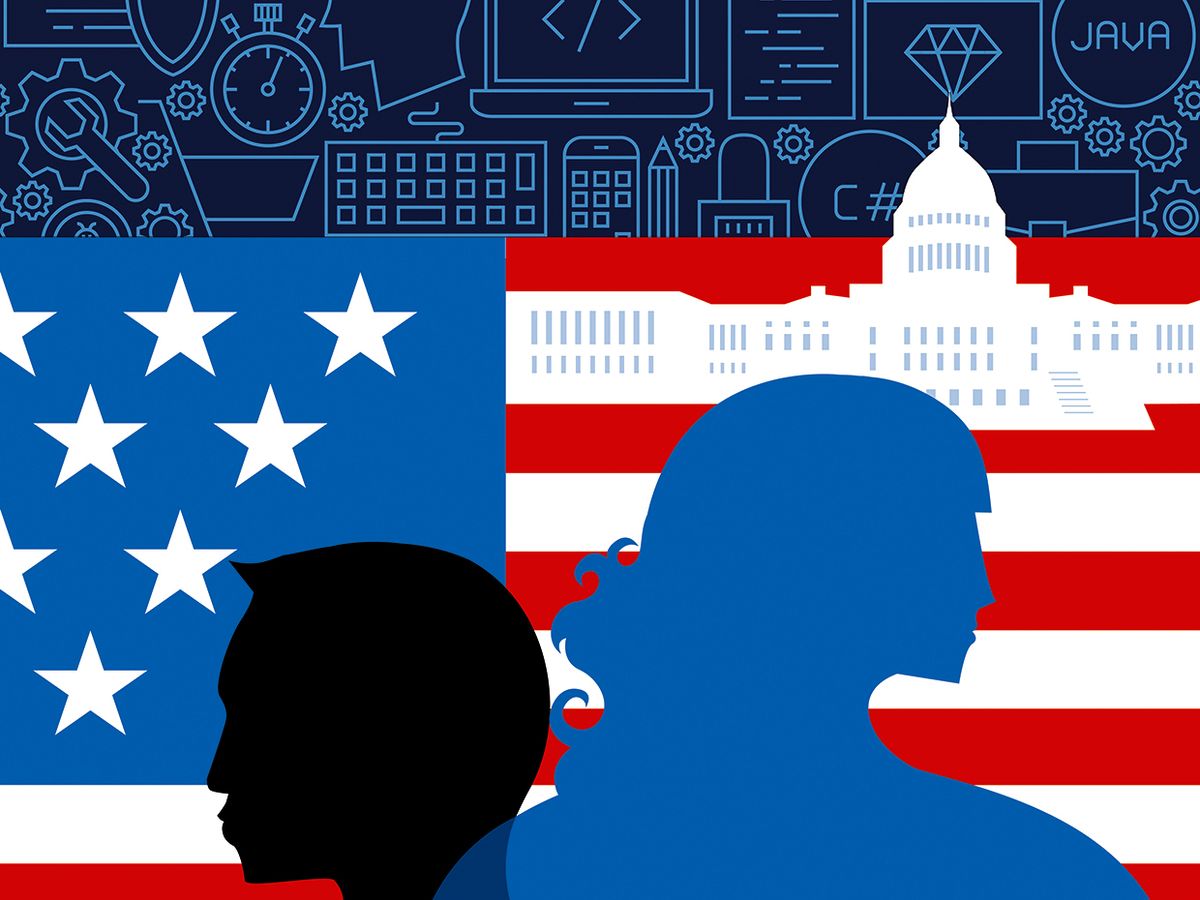Turmoil in the U.S. immigration system is hurting tech companies. That’s the consensus of panelists from the U.S. Chamber of Commerce, Microsoft, and Phone2Action, speaking at a session on immigration at CES in Las Vegas last week.
The mess is not brand new, it’s just getting worse, the panelists indicated. Companies struggle with the limitations of the H-1B visa program, they say, and a backlog in permanent resident applications is making the H-1B crunch worse. H1-B visas allow U.S. companies to employ foreign workers with certain specialized skills or educational backgrounds.
“The system has not been functioning well for a long time,” said Portia Wu, director of workforce policy for Microsoft.
“It’s a domino effect,” said Jon Baselice, director of immigration policy for the U.S. Chamber of Commerce. “If a country hits the green card cap for a year, that forces people to wait. And then that hurts the H-1B cap, because the people who can’t get green cards have to renew their H-1Bs.”
Because of the bottlenecks in the permanent resident pipeline, Microsoft immediately sponsors anyone the company hires on an H-1B visa for a green card, says Wu. “They may be temporary on their visa, but they are not temporary to us,” she said. “They are permanent workers.”
The tech industry isn’t without blame for today’s H-1B problems, Wu admitted. “There are troubling examples of the way programs have been used,” she said. “The H-1B system is supposed to allow us to bring in the best and brightest—not for wage degradation, not for temporary replacements. If administration wants to tighten on that, we support that.” But, she said, the whole system has to speed up. “If you have to wait nine months,” she said, “you lose your top talent to Canada or the U.K.”
And the tech companies need this immigrant talent—as does the economy as a whole, the panelists indicated.
Baselice pointed out that a recent study discovered that cities with lower rejection rates for H-1B visa applications had better track records in creating jobs for American workers.
“One engineer can create 20 jobs,” argued Ximena Hartsock, cofounder of Phone2Action, which bills itself as a platform for digital advocacy.
The panelists were not just concerned about H-1B workers but about recipients of the Deferred Action for Childhood Arrivals (DACA) program, which allows some people who had been brought into the U.S. as children to be protected from deportation for a period of time and to be allowed to work legally. The panelists noted that last Tuesday, President Donald Trump publicly met with Republican and Democratic lawmakers to discuss the future of the DACA program. Panelists were encouraged simply by the fact that the meeting was held in public.
Said Baselice: “The president seemed willing to take heat. The fact that he said, ‘If you come up with something, I’ll sign it’ is encouraging.”
Nothing was settled at the president’s meeting—and indeed, the situation has gotten more complicated since. But, said Baselice, “from the Senate Republican staffers I’ve talked to, their bosses think we have hit a point of no return. That’s good, because it means something will happen.”
And it’s important for the tech industry that the DACA program is renewed. If it is not, Baselice said, “It’s going to be disruptive to a lot of companies that are employing DACA recipients. People will lose their status on a rolling basis. It will impact Microsoft and other tech firms, but also manufacturing companies.”
Other actions the Trump administration is taking around immigration can cause problems for the tech industry, as well.
As Hartsock pointed out: “This year, there has been a big decline in students from other countries coming in to study engineering and computer science. We count on those students as interns.”
Wu added, “In the U.S. we still don’t have a STEM pipeline—we have far more jobs in computer science than students we are graduating. So we have to look everywhere for talent.”
What can be done about the immigration mess?
Hartsock said, perhaps in the same way that countries have special caps today, different types of companies could have special caps. “If there are companies at the growing stage, with great capacity to create jobs,” she said, “that should be taken into consideration.”
Wu suggested that a point-based system might be a place to start, as long as the system doesn’t place too much emphasis on education but considers a far wider range of criteria.
Baselice wasn’t so sure. “Our member companies have concerns about a point-based system, which would rely on someone in D.C. figuring out our labor needs.”
And, overall, he said, “merit-based systems don’t expand the number of merit-based immigrants; instead they take a hacksaw to family-based immigration.”
“The Chamber doesn’t see having less immigrants as raising the standard of living for Americans,” he added. “Immigrants create jobs, drive cars, buy homes. We don’t think we need less immigrants. So we are wary of seeing proposals for merit-based when it is really a bill that reduces immigrants.”
Tekla S. Perry is a senior editor at IEEE Spectrum. Based in Palo Alto, Calif., she's been covering the people, companies, and technology that make Silicon Valley a special place for more than 40 years. An IEEE member, she holds a bachelor's degree in journalism from Michigan State University.



